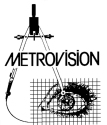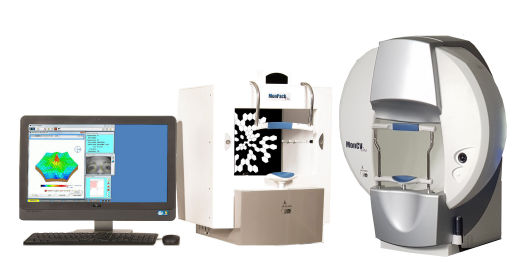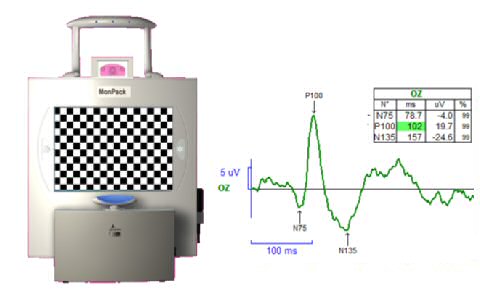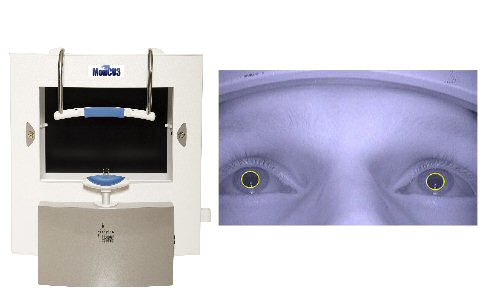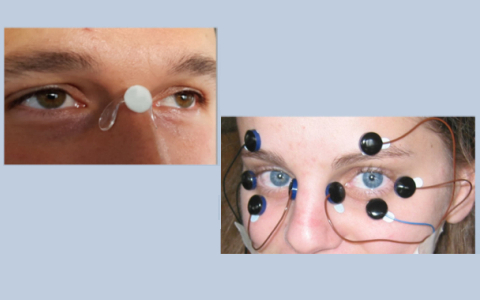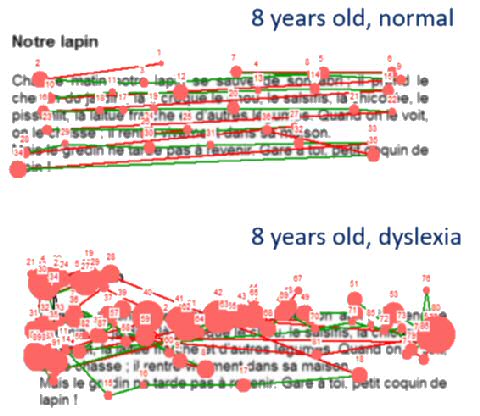Tests for neuro-ophthalmology
- Home
- Clinical applications
- Neuro-ophthalmology
Introduction
Metrovision's multimodal instruments offer a complete set of solutions for the evaluation of visual functions in neuro-ophthalmology
Visual field perimetry
This program allows the realization of standard automated perimetry as well as manual "Goldmann mode" perimetry.
ERG and VEP
This program realizes ERG and VEP exams according to the ISCEV international standard
Pupillometry
This program measures pupil size at different levels of illumination and pupillary dynamic responses to flash stimulations.
Eye movements recording
Two eye movement recording techniques are available on the Metrovision system:
Video-oculography (VOG) and Electro-oculography (EOG).
- Video-oculography (VOG)
A high-resolution 200 Hz video sensor combined with advanced image processing measures
the position of a reflective dot to determine the movements of the head.
The positions of the pupils in relation to this patch are used to determine the movements of the eyes.
Compared with the pupil-corneal reflex technique, this solution is relatively insensitive to
stray reflections (tears, corrective lenses, etc.) and can measure eye movements of large amplitude.
- Electro-oculography (EOG)
Electrodes connected to a 4 channels bioelectric amplifier record variations of the bioelectric potential
occuring as a result of eye movements between skin electrodes placed near the orbit, on both sides of the cornea-retina axis.
- Video recording
Synchronized high-speed video recording can be performed with both VOG and EOG.
Comparison of VOG and EOG techniques
Key points
- Metrovision's VOG technique does not require a helmet and is easily adaptated to most patients.
However, the access to the pupil images is necessary and the use of VOG may be limited in some circumstances
(tests performed with closed eyes, patients with difficulties opening the eyes, presence of tears,..);
- EOG allows recording eye movements in almost every patient despite the use of electrodes.
However results may be less accurate than with VOG because of artefacts such as electrode drifts, blinks, ...;
Eye gaze strategy
This program records eye movements while the subject is viewing images.
It can be used for the assessment of subjects with dyslexia (viewing a reading text)
for the evaluation of patients with hemineglect ...
